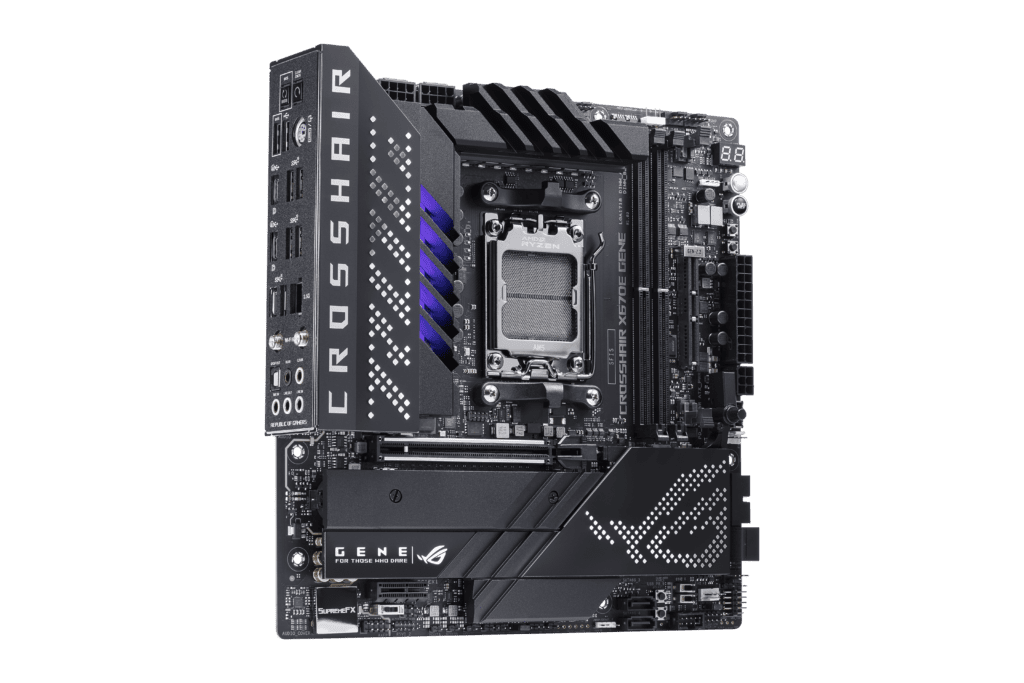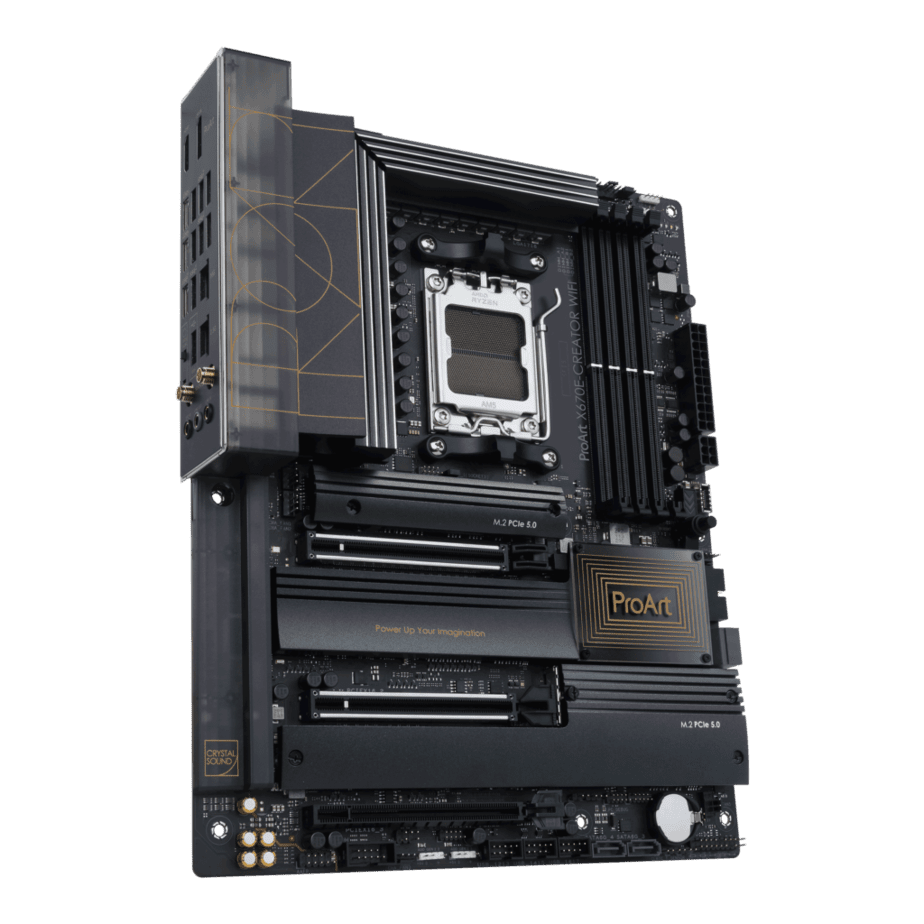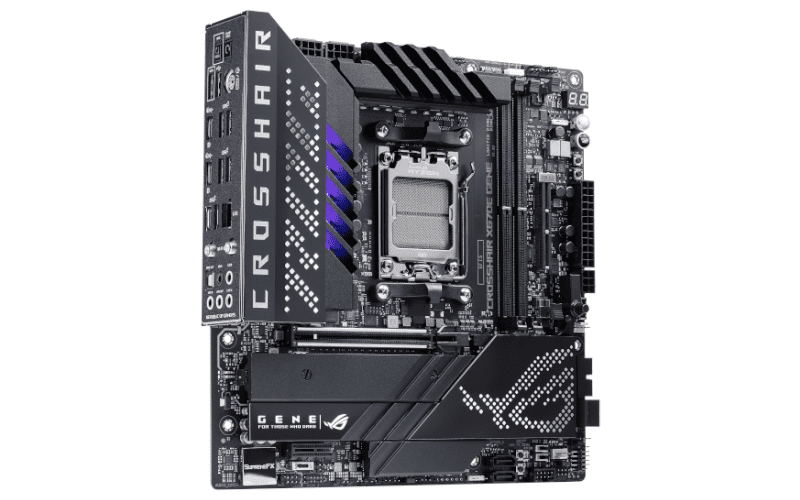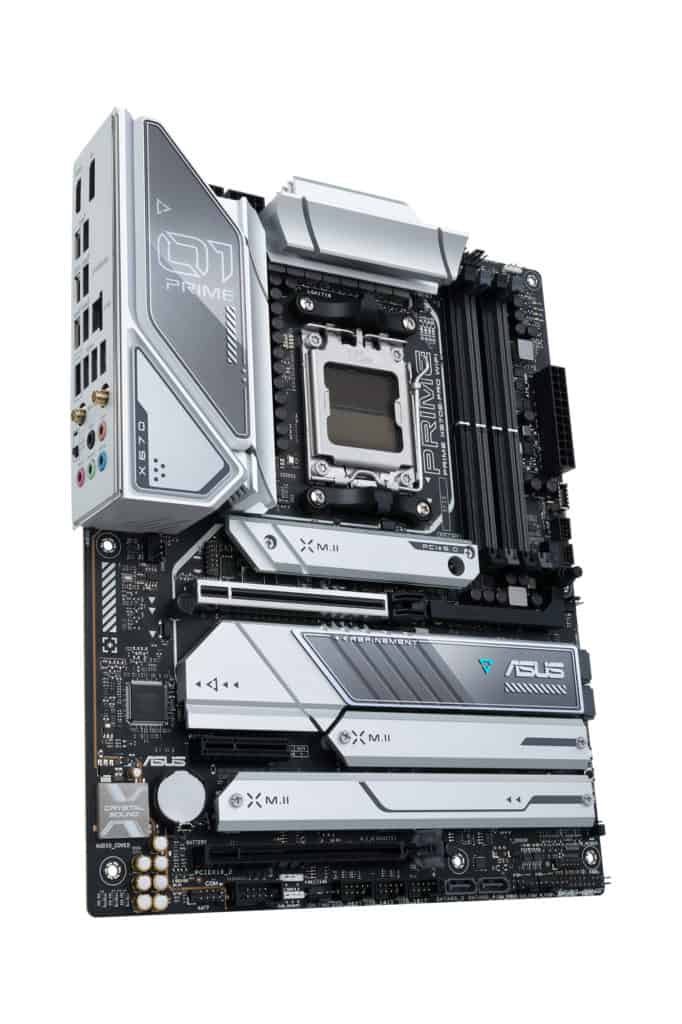Last Updated on
Asus is pulling out all the stops this Gamescom with a full booth dedicated to the firm's massive lineup of forthcoming AM5 socket motherboards, intended for use in tandem with AMD's Ryzen 7000 series CPUs.
Prime Day is finally here! Find all the biggest tech and PC deals below.
- Sapphire 11348-03-20G Pulse AMD Radeon™ RX 9070 XT Was $779 Now $739
- AMD Ryzen 7 7800X3D 8-Core, 16-Thread Desktop Processor Was $449 Now $341
- ASUS RTX™ 5060 OC Edition Graphics Card Was $379 Now $339
- LG 77-Inch Class OLED evo AI 4K C5 Series Smart TV Was $3,696 Now $2,796
- Intel® Core™ i7-14700K New Gaming Desktop Was $320.99 Now $274
- Lexar 2TB NM1090 w/HeatSink SSD PCIe Gen5x4 NVMe M.2 Was $281.97 Now $214.98
- Apple Watch Series 10 GPS + Cellular 42mm case Smartwatch Was $499.99 Now $379.99
- ASUS ROG Strix G16 (2025) 16" FHD, RTX 5060 gaming laptop Was $1,499.99 Now $1,274.99
- Apple iPad mini (A17 Pro): Apple Intelligence Was $499.99 Now $379.99
*Prices and savings subject to change. Click through to get the current prices.
Amid Gamescom, Asus wields in total five of its different types of ROG AM5 mobos, each of which carries its own particular use case for PC parts enthusiasts. While all of those shown at Gamescom lean more on the higher end of the spectrum, Asus will have more low-end offerings available in the X670 line as opposed to the X670E design.
Thus far, Asus has shown off the following AM5 motherboards at Gamescom:
- ROG Crosshair X670E Extreme
- ROG Crosshair X670E Hero
- ROG Strix X670E-E Gaming WiFi
- ROG Crosshair X670E Gene in mATX
- ROG Strix X670E-I Gaming WiFi



As most can see with these newer AM5 products, everything is much larger. The VRM backplates sport massive new build sizes, similar to the boards' doubled M.2 Gen 5 heatsinks. Asus AM5 mobos will also have built-in USB4 pre-mounted I/Os situated on the back of the device for ease of access and better connectivity.
Asus boasted that all ROG AM5 motherboards will have so-called “Dynamic OC Switcher” technology, a form of optimization parameter that already exists on high-end AM4 motherboards. The integrated Dynamic OC Switcher tech on forthcoming ROG motherboards will give it dynamic decisions depending on CPU situations, allowing the board to switch from AMD PBO (Precision Boost) to manual OC, so that users can get the best possible performance out of their CPU in varied overclocking workloads.
For instance, say the CPU temperature is getting a bit too hot due to the user utilizing multicore turbo frequencies. The Dynamic OC Switcher will thus avert to single-threaded performance so that functionality isn't lost.
The AM5 motherboards out of Asus will also have “Ryzen Core Flex” technology, which gives hardcore overclockers increased wiggle room in their CPU boosting potentials. Essentially, the technology leverages enterable algorithms via the user to jack up the possible overclocking levels, ensuring that the CPU doesn't overheat while still getting the best possible speeds.
Asus itself has been working on some interesting assisted overclocking tech in its AM5 boards beyond the Dynamic OC Switcher, as well, most prominent among them being its AI Cooling II. The firm claims the operation can optimize performance in real-time, ensuring that fans are not too loud yet still providing enough cooling to chill necessary PC internals.
AMD itself will be announcing information on its own Ryzen 7000 series CPUs in the coming weeks.


